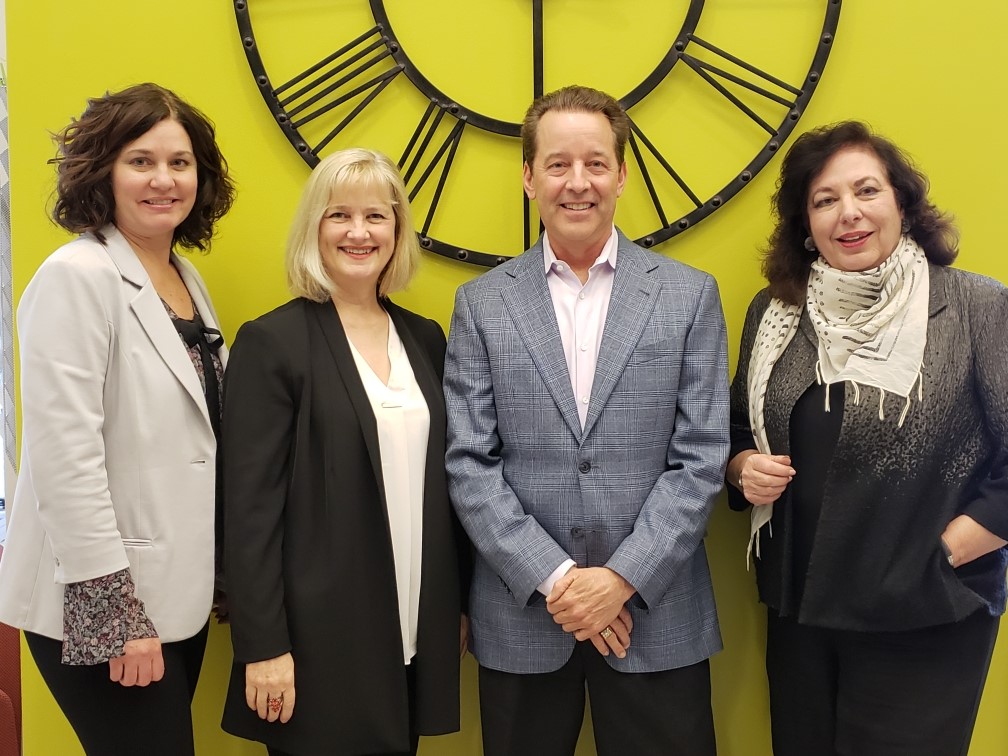I recently went to the Legal Marketing Association’s (LMA) educational program, “Training the Trainers for Public Speaking Success” to gain knowledge on the tools, tips and techniques for preparing lawyers to give a presentation – whether it be at a bar association meeting, conference, webinar or another event. Moderated by our own Traci Stuart, the panel included public speaking experts’ David Adams, Founder, Revenue Wise; Marianne Fleischer, Founder, Fleischer Communications; and Doris Pickering, CEO, Silicon Valley Speaks.

As marketers, we know that every speaking engagement is a potential business development opportunity; however, getting our clients to understand the intricacies of preparing a successful, revenue-generating talk can sometimes be challenging. Even the most experienced speaker has their quirks and bad habits, and presentation coaching can go a long way in getting the most out of an engagement – both personally and professionally.
No matter the type of presentation, all participants involved have a set of goals. Whether you are the presenter or an attendee, the universal goal is to come away from the presentation with something that you can use for personal betterment. Adams outlined four goals for each side to keep in mind, stating: “An audience member wants to: 1) learn something; 2) apply what they learn; 3) enjoy themselves; and 4) evaluate people to hire. On the other hand, the speaker wants to: 1) generate new leads; 2) secure new clients; 3) build their relationships with existing clients; and 4) build their brand.”
In order to achieve these goals, presenters must understand the specifics of the opportunity (length, topic, audience demographic, etc.). Fleischer emphasized the importance of fine tuning the presentation to discuss what is at stake for those listening and what they can take away from doing so. The more targeted a speaker can be, the better the presentation. In order to make the subject at hand more engaging, Fleischer encouraged the use of an anecdote. “Anecdotes can be a great presentation technique,” she said. “Tell the story by identifying a clear plot, a twist to make it interesting, a resolution and lesson learned. This is far more appealing than posting a text heavy slide, and the audience will retain the information better.”
Focusing on engagement and brevity, a slide presentation must be in line (timing-wise) with what the presenter is saying. Once a slide is projected on the screen, the audience will immediately begin to read it and will likely tune out whatever is being said. Pickering mentioned that since members of the audience read at different levels and speeds, putting up slides with bullets, sub-bullets and sub-sub-bullets will make the presentation extremely difficult to follow. Instead, she suggested that slides should only highlight the key points and be used as visual aids.
While keeping the presentation succinct is key to maintaining the audience’s attention, it will be useless without the right delivery. For any of us, it is important to know what we do when we are presenting. “Presenters should video themselves to point out a nervous tick and have something tangible to view in order to stop it,” she said. “If someone tells you that you are talking too fast, believe them! You have to be conscious of your speed, and practice speaking slower.” Fleischer added that an audience must hear the presenter and believe in what they are saying. Awareness is key and taking the time as a speaker to practice a presentation and its pace multiple times beforehand will help fight those habits. Nervous energy can also be identified and eliminated by the presenter by methods including walking on a stage or quietly grabbing the fingers of their fidgeting opposing hand to remain centered and calm.
Ultimately, it all leads back to getting the business cards of audience members after the presentation is over. But how is this done? Adams mentioned that every presentation needs a great hook to start a dialog. Three go-to hooks to use are: 1) a scored worksheet/assessment; 2) a guide or whitepaper; and 3) a free or flat-fee service. Each of these can give the audience some incentive to pay attention or a reason for the presenter to reach out after the session concludes.
As with anything in life, the more you do something, the better at it you become. Helping a speaker understand what worked and what can be improved on is critical to them wanting to present again and mastering the craft. Oftentimes, presenters focus too much on the negative and although they may say they don’t have the time to practice, it really is their job to do so. Pickering often tells clients to use their commute as a time to practice their presentations. In order to be totally comfortable on stage, especially if something does not go according to plan the day of, you must be totally prepared. This comes with repetition. Getting new clients is the end game and marketers need to drive the point home to them that speaking engagements are business development opportunities.
— Joey Telucci
